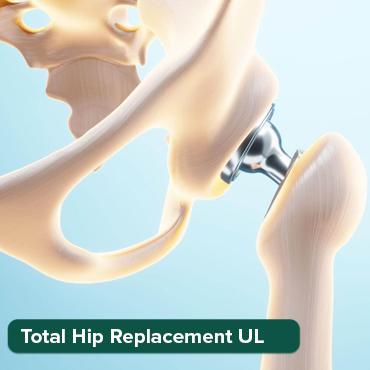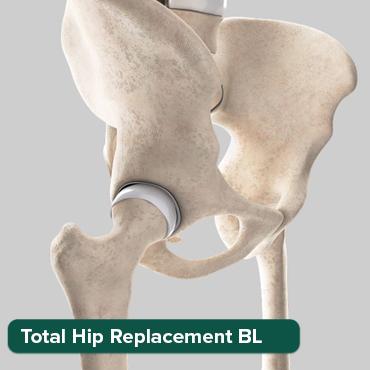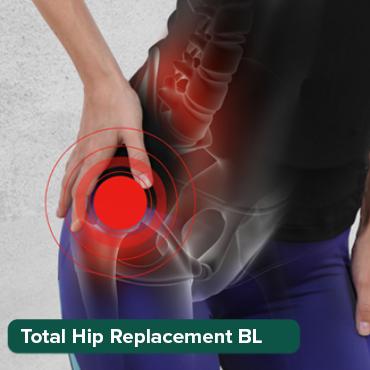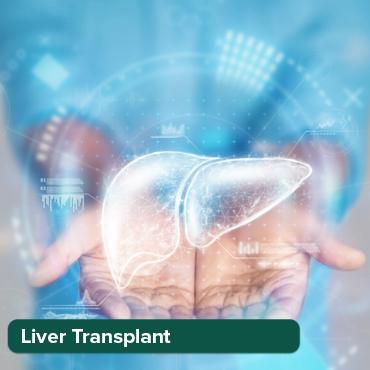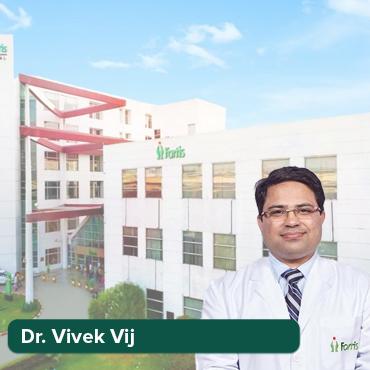
Malalim na gabay sa paggamot sa kanser sa suso sa UAE
10 Jul, 2024
 Healthtrip Team
Healthtrip Team Ikaw ba o isang mahal sa buhay na naghahanap ng masusing opsyon sa paggamot sa kanser sa suso sa UAE. Ang gabay na ito ay ang iyong mahabagin na kasama sa paggalugad ng paggamot sa kanser sa suso sa UAE. Tuklasin ang mga nangungunang ospital, personalized na mga plano sa paggamot, at mga serbisyong pangsuporta sa pangangalaga na inuuna ang iyong kapakanan. Gamit ang impormasyong ito, i-navigate ang iyong landas patungo sa pagpapagaling nang may kumpiyansa at kalinawan.
Mga sintomas ng kanser sa suso
Maaaring magpakita ang kanser sa suso sa iba't ibang paraan, at magandang malaman kung ano ang dapat bantayan:
Pinakatanyag na mga pamamaraan sa India
a. Bukol o pampalapot: Minsan maaari kang makaramdam ng bukol o pampalapot sa iyong dibdib o underarm. Maaari itong maging kakaiba sa nakapalibot na tisyu at tila hindi mawawala.
Mga Paggamot sa Kaayusan
Bigyan ang iyong sarili ng oras upang makapagpahinga
Garantisadong Pinakamababang Presyo!

Garantisadong Pinakamababang Presyo!
b. Pagbabago sa laki o hugis: Kung ang isang suso ay nagsimulang mag-iba sa laki o hugis kumpara sa isa pa, ito ay sulit na tingnan.
c. Sakit o kakulangan sa ginhawa: Habang ang kanser sa suso ay karaniwang hindi masakit sa una, ang ilang mga tao ay nakakaramdam ng kakulangan sa ginhawa o lambing sa kanilang mga suso.
d. Mga Pagbabago sa Balat: Pagmasdan ang anumang hindi pangkaraniwang mga pagbabago sa balat ng iyong dibdib, tulad ng pamumula, pag -dimpling, o puckering. Minsan maaari itong magmukhang ang balat ay hinila.
e. Mga Pagbabago sa Utong: Panoorin ang mga pagbabago sa iyong mga utong, tulad ng paghila nito papasok, pagkakaroon ng pantal, o pagkakaroon ng magaspang o madugong discharge na hindi gatas.
f. Pamamaga o init: Kung ang iyong suso ay biglang namamaga, nakakaramdam ng kakaibang init, o may pamumula na hindi nawawala, maaaring ito ay isang senyales ng isang bihirang ngunit mas agresibong uri ng kanser sa suso.
g. Mga isyu sa nipple: Bigyang-pansin kung ang iyong utong ay nagsisimulang humila papasok o pumikit kapag ito ay lumalabas nang normal.
h. Hindi inaasahang Paglabas: Kung napansin mo ang malinaw o madugong likido na lumalabas sa iyong utong nang hindi pinipiga ito, pinakamahusay na suriin ito.
i. Nagbabago ang texture ng balat: Sa ilang mga kaso, ang balat sa iyong dibdib ay maaaring magsimulang magmukhang balat ng isang orange (peau d'orange), na isang senyales upang magpatingin sa iyong doktor.
Tandaan, ang mga sintomas na ito ay maaari ding sanhi ng iba pang mga kundisyon, ngunit laging matalino na magpatingin sa anumang hindi pangkaraniwang bagay ng isang healthcare provider. Ang maagang pagtuklas ay susi, kaya ang regular na pagsusuri sa sarili at mga mammogram ay mahalaga para maagang mahuli ang kanser sa suso kapag ang paggamot ay pinakaepektibo.
Diagnosis ng kanser sa suso sa UAE
1. Klinikal na pagsusuri: Nagsisimula ito sa isang masusing pag-check-up ng isang tagapagbigay ng pangangalagang pangkalusugan na sinusuri ang iyong mga suso at kalapit na mga lymph node para sa anumang mga palatandaan tulad ng mga bukol, mga pagbabago sa laki o hugis, pag-dimpling ng balat, o mga abnormalidad ng nipple.
2. Mga Pagsubok sa Imaging:
- Mammogram: Mammogram: Ang pamamaraang ito ng X-ray ay susi para sa pagsusuri sa kanser sa suso. Tumutulong ito sa lugar ng mga kahina -hinalang lugar tulad ng masa o maliliit na deposito ng calcium.
- Ultrasound: Minsan, ginagamit ang ultrasound kasama ng mammography upang makakuha ng mas malinaw na pagtingin sa mga partikular na lugar na nangangailangan ng higit na pagsisiyasat.
- MRI (Magnetic Resonance Imaging): Sa mga espesyal na kaso, tulad ng siksik na tisyu ng suso o mga taong may mataas na peligro, maaaring inirerekomenda ang MRI para sa isang mas detalyadong pagsusuri.
3. Biopsy: Kung may nakitang kakaiba sa panahon ng imaging o pagsusuri, isang biopsy ang ginagawa upang mangolekta ng mga sample ng tissue mula sa kahina-hinalang lugar:
- Fine Needle Aspiration (FNA): Ang isang manipis na karayom ay kumukuha ng mga cell o likido mula sa isang bukol o lymph node.
- Biopsy ng Core Needle: Ang isang mas malaking karayom ay tumatagal ng isang maliit na piraso ng tisyu para sa mas malalim na pagsusuri.
- Surgical Biopsy: Surgical Biopsy: Minsan, kinakailangan ang operasyon upang alisin ang isang mas malaking sample ng tisyu para sa isang mas tumpak na diagnosis.
4. Pagsusuri ng Patolohiya: Ang mga halimbawang ito ng tisyu ay ipinadala sa isang lab kung saan sinusuri ng isang pathologist ang mga ito sa ilalim ng isang mikroskopyo. Sinusuri nila ang mga selula ng kanser, tinutukoy ang uri ng kanser (tulad ng ductal o lobular carcinoma), at tinatasa ang katayuan ng receptor ng hormone at pagpapahayag ng protina ng HER.
5. pagtatanghal ng dula: Kapag nakumpirma na ang cancer, nakakatulong ang mga staging test na matukoy kung gaano ito kumalat:
- Mga Pagsusuri sa Imaging: Maaaring gamitin ang mga CT scan, PET scan, bone scan, o MRI para suriin ang mga lymph node, buto, o iba pang organo.
- Lymph Node Biopsy: Makakatulong ito na makita kung ang cancer ay umabot sa kalapit na mga lymph node.
6. Pagsusuri ng Genetic: Ang ilang indibidwal ay maaaring sumailalim sa genetic testing upang suriin ang mga partikular na mutasyon (tulad ng BRCA1 o BRCA2) na nagpapataas ng panganib sa kanser sa suso o nakakaapekto sa mga desisyon sa paggamot.
7. Multidisciplinary Team: Ang pagpaplano ng paggamot ay nagsasangkot ng isang pangkat ng mga espesyalista (mga oncologist, surgeon, radiologist, pathologist) na nagtutulungan upang lumikha ng isang personalized na plano sa paggamot batay sa iyong partikular na sitwasyon at mga kagustuhan.
8. Suporta at Edukasyon: Sa buong proseso, makakatanggap ka ng gabay at suporta upang maunawaan ang iyong pagsusuri, mga pagpipilian sa paggamot, at kung ano ang aasahan. Kasama dito ang emosyonal na suporta, pag -access sa pagpapayo, at mga mapagkukunan upang makatulong na pamahalaan ang mga praktikal na aspeto ng pamumuhay na may kanser sa suso.
Ang proseso ay idinisenyo upang magbigay ng masusing pag -aalaga at suporta, tinitiyak na natanggap mo ang pinakamahusay na posibleng paggamot na naaayon sa iyong mga pangangailangan at pangyayari. Ang maagang pagtuklas at personalized na pangangalaga ay susi sa pagpapabuti ng mga resulta at epektibong pag-navigate sa diagnosis ng kanser sa suso.
Mga Opsyon sa Paggamot para sa Paggamot sa Breast Cancer sa UAE
A. Operasyon:
a. Lumpectomy: Ang pamamaraang ito ay nagsasangkot sa pag -alis ng cancerous tumor kasama ang isang maliit na margin ng nakapalibot na malusog na tisyu. Nilalayon nitong mapanatili ang dibdib hangga't maaari habang epektibong ginagamot ang localized breast cancer.
b. Mastectomy: Mayroong iba't ibang mga uri ng mastectomy:
- Simpleng Mastectomy: Tinatanggal ang buong tisyu ng suso, kabilang ang nipple at areola.
- Binagong Radical Mastectomy: Tinatanggal ang tissue ng dibdib.
B. Radiation therapy:
b. Brachytherapy: Kilala rin bilang panloob na radiation therapy, ang brachytherapy ay nagsasangkot ng paglalagay ng mga radioactive na mapagkukunan (buto o mga pellets) nang direkta sa tisyu ng suso malapit sa site ng kanser. Nagbibigay-daan ito para sa naka-target na paghahatid ng radiation habang pinapaliit ang pagkakalantad sa mga nakapaligid na malusog na tisyu.
C. Chemotherapy:
b. Neoadjuvant chemotherapy: Ibinigay bago ang operasyon (neoadjuvant therapy) upang pag -urong ng malalaking mga bukol, na ginagawang mas madali itong alisin ang kirurhiko. Ang pamamaraang ito ay maaari ring makatulong upang masuri ang tugon ng tumor sa mga gamot na chemotherapy.
D. Hormon Therapy::
b. Mga inhibitor ng aromatase: Ang mga gamot na ito ay nagpapababa ng mga antas ng estrogen sa mga kababaihan ng postmenopausal sa pamamagitan ng pagharang sa enzyme aromatase, na nagko -convert ng mga androgen sa estrogen. Ang mga inhibitor ng aromatase ay ginagamit lalo na sa mga kababaihan ng postmenopausal na may hormone receptor-positibong kanser sa suso.
E. Naka -target na therapy:
b. Mga Inhibitor ng Tyrosine Kinase: Ang mga gamot tulad ng Lapatinib ay humaharang sa mga partikular na enzyme (tyrosine kinases) na kasangkot sa paglaki at pagkalat ng mga selula ng kanser sa mga HER2-positibong kanser sa suso. Ang mga gamot na ito ay kadalasang ginagamit kasama ng iba pang mga paggamot.
F. Immunotherapy:
a. Mga inhibitor ng checkpoint: Ang mga gamot na immunotherapy tulad ng pembrolizumab o atezolizumab ay gumagana sa pamamagitan ng pag -target sa. Ang Immunotherapy ay isang umuusbong na patlang sa paggamot sa kanser sa suso at kasalukuyang pinag -aaralan sa mga klinikal na pagsubok.
G. Mga Klinikal na Pagsubok:
Ang mga pagsubok sa klinika ay nag -aalok ng pag -access sa mga bagong diskarte sa paggamot, mga kumbinasyon ng nobela ng gamot, o mga makabagong mga terapiya na hindi pa malawak na magagamit. Ang pakikilahok sa mga klinikal na pagsubok ay nag -aambag sa pagsulong ng pananaliksik sa kanser sa suso at pagpapabuti ng mga resulta ng paggamot para sa mga pasyente sa hinaharap.
H. Pansuportang Pangangalaga:
b. Pamamahala ng Sintomas: Ang mga nagbibigay ng pangangalagang pangkalusugan ay gumagamit ng mga gamot, terapiya, at mga suportang interbensyon upang pamahalaan ang mga epekto na may kaugnayan sa paggamot tulad ng sakit, pagduduwal, pagkapagod, at emosyonal na pagkabalisa.
Ang bawat pagpipilian sa paggamot ay maingat na pinili batay sa uri at yugto ng kanser sa suso, pati na rin ang mga indibidwal na kadahilanan ng pasyente tulad ng pangkalahatang kalusugan at personal na kagustuhan. Ang mga plano sa paggamot ay sama-samang binuo ng isang multidisciplinary na pangkat ng mga oncologist, surgeon, radiation oncologist, pathologist, at iba pang mga espesyalista upang magbigay ng komprehensibong pangangalaga at suporta sa buong paglalakbay sa paggamot.
Nangungunang mga ospital sa UAE para sa paggamot sa kanser sa suso sa UAE
1. HMS Al Garhoud Hospital
- Itinatag Taon: 2012
- Lokasyon: Al Garhoud, Malapit sa Millennium Airport Hotel - Dubai - United Arab Emirates, United Arab Emirates
Tungkol sa Ospital:
- Bilang ng Kama: 117
- Mga Operasyon na Sinehan: NA
- Bilang ng mga Surgeon: 5
- Mga operating room na kumpleto sa gamit at pangalawang operating room
- Mga kama para sa mga serbisyo sa obstetrics at ginekolohiya
- Neonatal intensive care unit na nilagyan ng pinakabagong teknolohiya (simula sa 24 na linggo)
- Ang departamento ng emerhensiya ay tumatakbo sa buong orasan
- Mga intensive care unit na nilagyan ng pinakabagong kagamitan
- Ang pangunahing ospital ng HMS Health and Medical Services Group
- Nag-aalok ng world-class na paggamot na may mga pambihirang resulta
- Nilalayon para sa pinakamataas na pamantayan ng kalidad ng medikal
- Matatagpuan sa Al Garhoud neighborhood ng Dubai
- Madaling ma-access ng mga pasyente mula sa lahat ng rehiyon ng UAE at GCC na mga bansa
- Reputasyon para sa paghahatid ng pangangalaga ng high-calibre sa isang ligtas, maginhawa, at modernong setting
HMS Nag -aalok ang Al Garhoud Hospital ng isang malawak na hanay ng mga serbisyong medikal, kabilang ang Anesthesia, Cardiology, Dermatology, Emergency Care, Gastroenterology, Pangkalahatang operasyon, masinsinang pangangalaga, panloob na gamot, nephrology, Neurology, Obstetrics & Gynecology, Ophthalmology, Oncology, at marami pa.
- Lokasyon: Abu Hail Road, Behind Ministry of Environment and Water, P.O.Kahon: 15881, Dubai, UAE, United Arab Emirates
- Taon ng Itinatag: 1970
Tungkol sa Ospital
- Isa sa pinakamalaking pribadong ospital sa Dubai
- Akreditado ng JCI
- Higit sa 200-bed capacity
- Tumatanggap ng higit sa 500 mga pasyente araw-araw
- Higit sa 65 internasyonal na kwalipikadong doktor
- Mga pribado at shared na kuwartong may mga modernong amenity
- 24/7 room service na may iba't ibang pagpipiliang pagkain
- Mga espesyal na menu na inihanda ng mga karanasang dietician
- Available ang mga serbisyo ng blood bank 24/7
- Priyoridad ang mga hakbang sa kaligtasan at kaginhawaan ng pasyente
- Mga espesyalista.
Paano makakatulong ang HealthTrip sa iyong paggamot?
Kung naghahanap ka ng paggamot sa kanser sa suso, hayaan HealthTrip maging iyong kumpas. Sinusuportahan ka namin sa buong iyong paglalakbay sa medisina kasama ang mga sumusunod:
- I -access sa nangungunang mga doktor sa 38+ mga bansa at ang pinakamalaking platform sa paglalakbay sa kalusugan.
- Pakikipagtulungan sa 1500+ mga ospital, kabilang ang Fortis, Medanta, at marami pa.
- Mga paggamot sa neuro, pangangalaga sa puso, mga transplant, aesthetics, at wellness.
- Pangangalaga at tulong pagkatapos ng paggamot.
- Mga telekonsultasyon kasama ang mga nangungunang doktor sa $1/minuto.
- Over 61K mga pasyente inihain.
- I-access ang mga Top treatment at mga pakete, tulad ng Angiograms at marami pa.
- Makakuha ng mga pananaw mula sa tunay na mga karanasan sa pasyente at Mga patotoo.
- Manatiling updated sa amingmedikal na blog.
- 24/7 walang patid na suporta, mula sa mga pormalidad ng ospital hanggang sa mga kaayusan sa paglalakbay o mga emerhensiya.
Pakinggan mula sa aming mga nasisiyahang pasyente.
Sa konklusyon, ang pag-navigate sa paggamot sa kanser sa suso sa UAE ay nangangailangan ng kaalaman sa paggawa ng desisyon at isang suporta sa network. Sa pamamagitan ng pag-unawa sa mga magagamit na opsyon sa paggamot, pag-access sa mga lokal na mapagkukunan, at pakikipag-ugnayan sa mga propesyonal sa pangangalagang pangkalusugan, ang mga indibidwal ay maaaring magbigay ng kapangyarihan sa kanilang sarili na gumawa ng mga mapagtitiwalaang pagpipilian tungkol sa kanilang kalusugan. Tandaan, hindi ka nag -iisa sa paglalakbay na ito. Humingi ng suporta mula sa mga mahal sa buhay at tagapagbigay ng pangangalagang pangkalusugan, manatiling alam tungkol sa mga pagsulong sa paggamot, at gumawa ng mga proactive na hakbang patungo sa pagbawi. Sama-sama, maaari tayong magsumikap patungo sa mas mahusay na mga resulta at suportahan ang bawat isa sa bawat hakbang ng paglalakbay.
Mga Kaugnay na Blog

Unparalleled Medical Care at Burjeel Medical City, Abu Dhabi
Experience the best of medical care and hospitality at Burjeel

Pancreatic Cancer Treatment Options in the UK: A Guide for Patients from Russia
Facing a diagnosis of pancreatic cancer can be overwhelming, especially

Top Hospitals for Bone Marrow Transplant in UAE
When facing the challenging journey of a bone marrow transplant,

Top Hospitals for Hormone Therapy in Cancer Treatment in UAE
Hormone therapy has become a cornerstone in the treatment of

Dubai’s Top Eye Care Hospitals
Let’s face it—life in Dubai moves fast, and eye health

Robotic-Assisted Radiation Therapy: Innovations in UAE Cancer Treatment
Cancer treatment has evolved dramatically over the years, with technological
